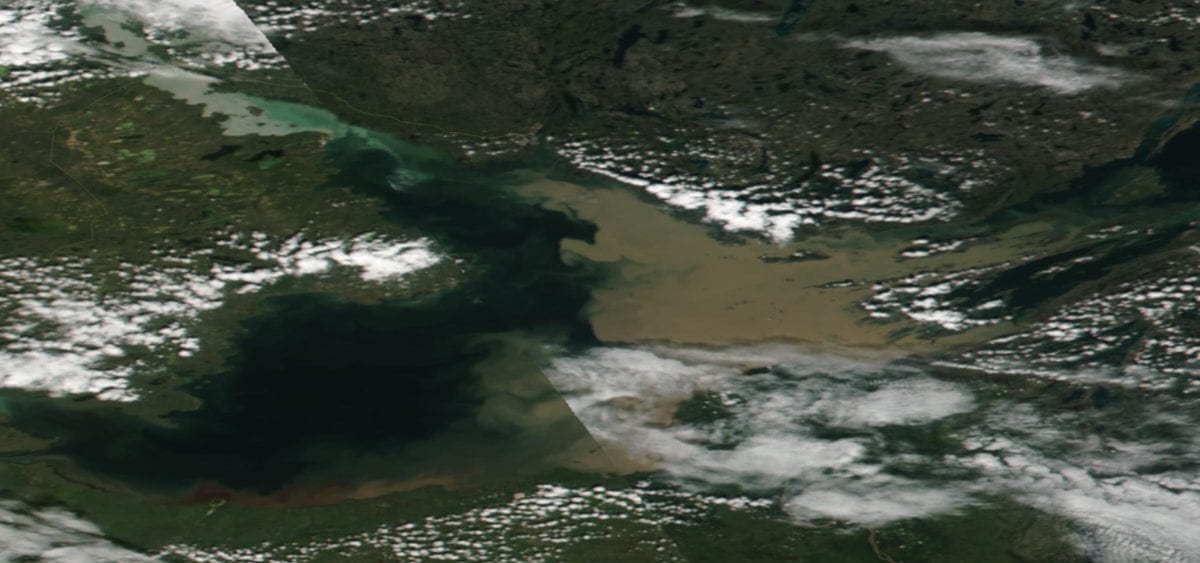Silt plumes spotted in Great Slave Lake are a result of high water levels on the Slave and Hay rivers, according to Environment and Natural Resources (ENR).
While water levels on the Hay River are going down, soil throughout many of the water basins that contribute to Great Slave Lake is wet. A portion of the rain runs over the ground to create surface runoff. That can increase the amount of sediment, or silt, in the water systems.

Darren Campbell, a spokesperson for ENR, said “it is normal to see a sediment plume form each year in Great Slave Lake from the Slave River and from the Hay River.”
He said that “sediment plumes can temporarily impact water quality prior to settling and dispersing.”
Campbell said the source for the sediment plume appears to be primarily the Slave River, based on satellite imagery.
ENR will be sampling the sediment plume at various depths as well as measuring water temperature, pH levels, turbidity (water clarity), and other assessments to monitor the water quality.
As to whether the plume is expected to spread, Campbell said that in cooler weather, surface waters begin mixing with the water below the surface, which should help to dissolve and disperse the sediments. He said that wind can help speed up the sediment dispersion process, but it can also help spread the silt “as we have observed over the past few weeks.”
He said the silt’s dispersal and migration depends on wind, changes in air and water temperatures, as well as differences in density between the river and lake water. All of which can be affected by the volume of the Slave River outflow.
Regarding ways that silt may impact fish habitats, ENR directed NNSL media to the federal department of Fisheries and Oceans, which has not yet responded to questions.
This comes after reports of water spills from the W.A.C Bennett and Peace Canyon dams into the Peace River, which is upstream from the NWT Slave River and Great Slave Lake. ENR continues to investigate possible impacts of the dam spills on NWT water systems.